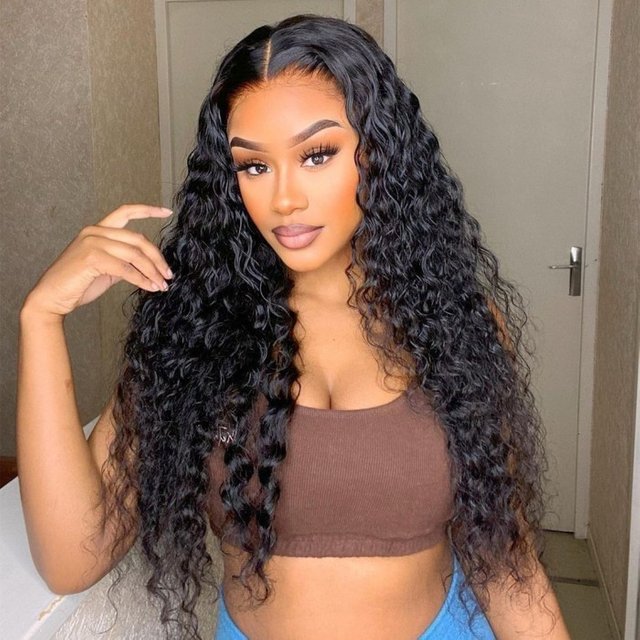Hair weave extension
The hair weave extension is a type of hair accessory that can be attached to your natural hair to add length, volume, or color. They come in various types such as clip-in, tape-in, and sew-in extensions. Clip-in extensions are the easiest to apply and remove, while tape-in and sew-in extensions offer a more permanent look. The following is my answer to a question that concerns all of you.

How long do weave in hair extensions last?
The longevity of hair weave extensions depends on several factors, including the quality of the hair, the method of installation, the care and maintenance, and the wearer's lifestyle. Here's a general guide to how long weave-in hair extensions might last:
Quality of Hair:
- Human Hair Wigs: High-quality human hair extensions can last up to a year or more with proper care. Remy hair, which is the highest quality and has the cuticles aligned, tends to last longer than non-Remy hair.
- Synthetic Hair Extensions: Synthetic hair typically has a shorter lifespan, lasting anywhere from 4 to 8 weeks, depending on the quality and care.
Installation Method: - Machine-Tied Wefts: These are generally more durable and can last longer, often up to 6 to 8 weeks before they need to be reinstalled or removed.
- Hand-Tied Wefts: These are known for their natural look and can last longer when installed by a skilled stylist, often up to 8 to 12 weeks.
Care and Maintenance: - Regular Maintenance: Regular washing, conditioning, and styling can affect the lifespan of extensions. Overuse of heat tools and harsh chemicals can shorten the life of the extensions.
- Proper Brushing: Using a soft-bristle brush and being gentle when detangling can help prevent breakage and extend the life of the extensions.
- Avoiding Chlorine and Salt Water: These can dry out and damage hair extensions, leading to a shorter lifespan.
Lifestyle: - Activity Level: If you lead an active lifestyle or engage in activities that cause sweating or exposure to heat and moisture, you may need to replace your extensions more frequently.
- Environmental Factors: Dry weather, pollution, and exposure to sunlight can also affect the longevity of hair extensions.
Average Lifespan: - Human Hair Extensions: Typically last 6 to 12 weeks, with some high-quality extensions lasting up to a year or more.
- Synthetic Hair Extensions: Usually last 4 to 8 weeks.
It's important to note that these are general estimates, and actual longevity can vary widely based on the specific circumstances. To get the most out of your weave-in hair extensions, it's crucial to follow the care instructions provided by the manufacturer and to have them professionally installed and maintained by a skilled stylist.

Can you swim with hair extensions?
You can swim with hair extensions, but there are several considerations to keep in mind to protect both your natural hair and the extensions:
Types of Extensions:
- Clip-In Extensions: These are the most swim-friendly because they can be easily removed before swimming. You can swim without them and then clip them back in afterward.
- Tape-In Extensions: These can be more delicate and may not be suitable for swimming, as the water and chemicals can weaken the adhesive.
- Sew-In Extensions (Weave): These are more securely attached and can withstand swimming better than tape-ins, but they still require careful handling.
- Bonded Extensions (Fusion): These are the most securely attached and can withstand swimming, but the chemicals in the pool can affect the bond and potentially cause slippage or damage.
Tips for Swimming with Hair Extensions:
- Protect Your Extensions:
- Wet hair can become more fragile, so it's important to protect your extensions from excessive moisture and chemicals.
- Consider wearing a swim cap to minimize direct contact with the water, especially if you have bonded or tape-in extensions.
- Rinse After Swimming:
- Chlorine and saltwater can be damaging to hair extensions. Rinse your hair thoroughly with fresh water as soon as possible after swimming to remove any chemicals or salt.
- Use a sulfate-free shampoo and conditioner to clean your hair and extensions without stripping away too much natural oil.
- Deep Condition:
- After swimming, give your extensions a deep conditioning treatment to restore moisture and prevent dryness and breakage.
- Avoid Chlorine:
- If possible, swim in a pool with saltwater or freshwater instead of chlorine, as chlorine can be particularly harsh on hair extensions.
- Limit Sun Exposure:
- The sun can fade and damage hair extensions. If you're swimming in a sunny location, protect your hair with a hat or scarf.
- Gentle Handling:
- Be gentle when detangling your hair after swimming. Use a wide-tooth comb or your fingers to minimize breakage.
- Professional Maintenance:
- If you have sew-in or bonded extensions, consider scheduling a maintenance appointment with your stylist after frequent swimming to ensure they remain in good condition.
Considerations:
- If you have sew-in or bonded extensions, consider scheduling a maintenance appointment with your stylist after frequent swimming to ensure they remain in good condition.
- The more securely the extensions are attached to your natural hair, the more careful you need to be when swimming to avoid causing damage or pulling out your natural hair.
- Extensions that are not properly cared for after swimming can become dry, matted, and more susceptible to breakage.
In summary, while you can swim with hair extensions, it's important to take precautions to protect both your natural hair and the extensions from the elements. Always follow the care instructions provided by the extension manufacturer for the best results.